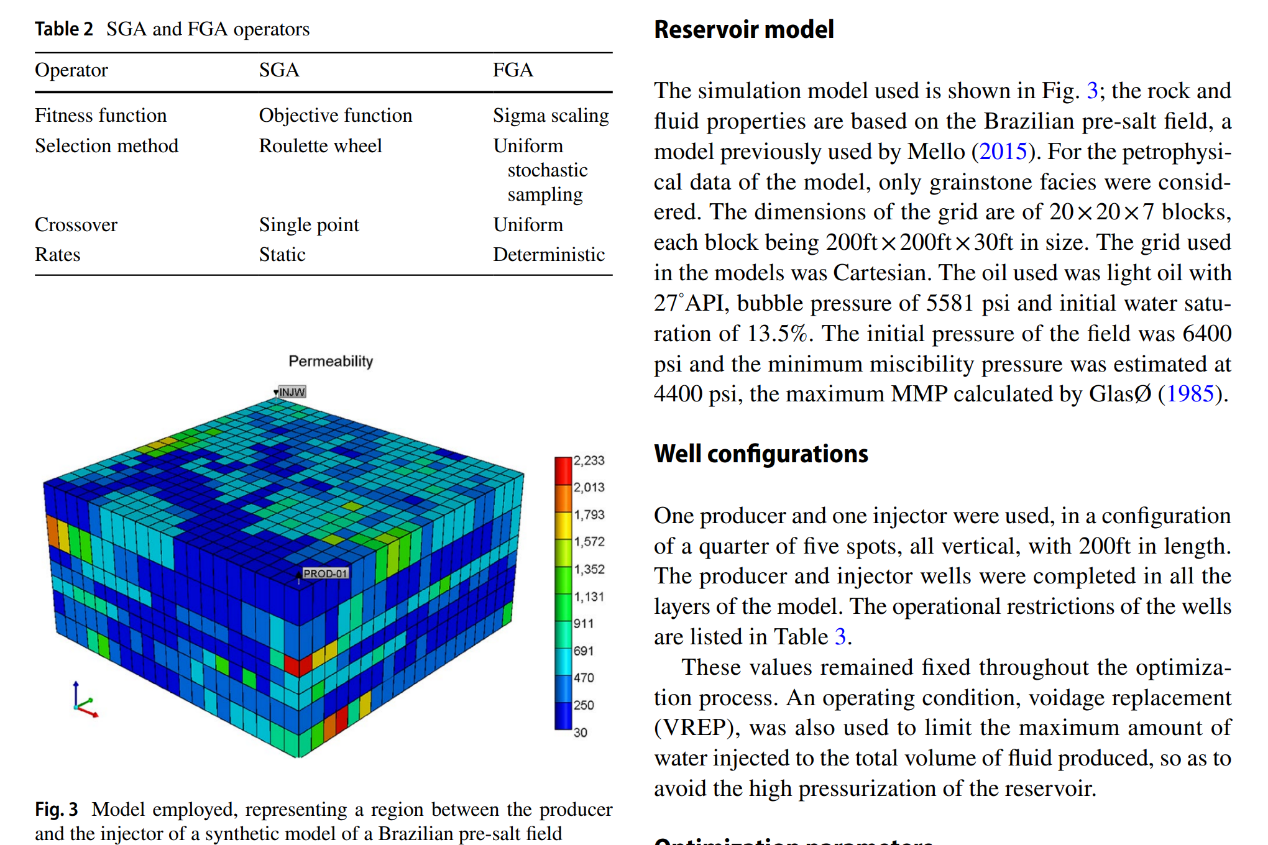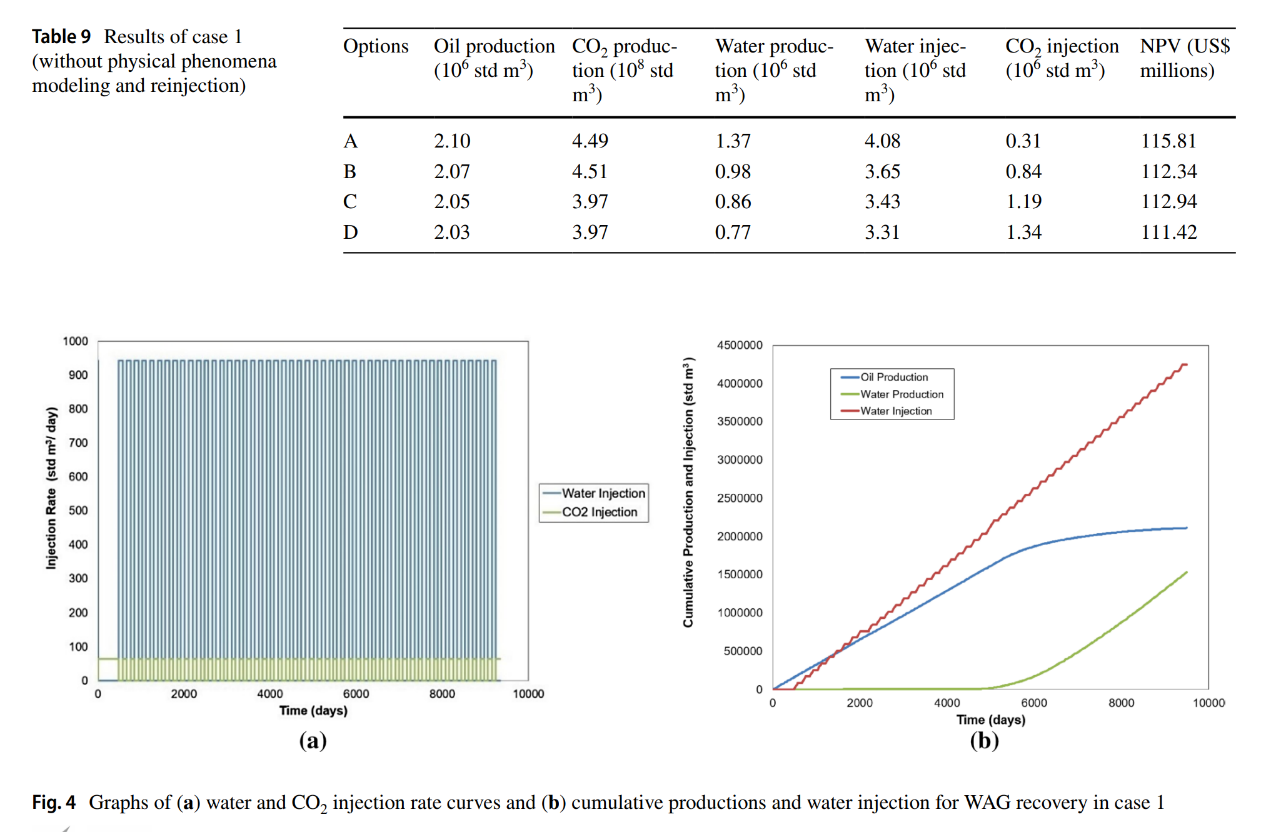Impact of physical phenomena and cyclical reinjection in miscible CO2-WAG recovery in carbonate reservoirs
在巴西的盐下集群中发现了高含量CO2的碳酸盐沉积层,并进行了开采。因此,类似CO2-WAG的增油技术已经进行了评估和应用,例如在卢拉油田。尽管研究表明这种技术的优势,但仍然难以准确估计增油量的增加。
本文提出了一种评估主要现象及CO2回收对这些油田管理有益的方法。结果显示,模拟主要机理(如相对渗透率滞后效应和CO2的水溶性)可以提高采收率,并伴有明显增加的CO2注入量。然而,CO2的回采被显示为减少注入量和增加净现值(NPV)的关键。结果显示,考虑生产井-注入井配对,油产量增加了4%,NPV增加了9%。
Abstract
Carbonated reservoirs with high percentage of CO2 have been discovered and produced in the Brazilian pre-salt cluster. Recovery techniques, such as CO2-WAG, have hence been evaluated and applied, as in the Lula field. Although studies demonstrate the advantages of this technique, it is still difficult to estimate an increase in oil recovery. Thus, this work presents a methodology to evaluate the impacts of the main phenomena that occur and how CO2 recycling can benefit the management of these fields. The results showed an increase in recovery with the modeling of the main phenomena such as relative permeability hysteresis and aqueous solubility of CO2, accompanied by a significant increase in CO2 injection. However, the recycling of the CO2 produced was shown to be fundamental in the reduction in this injection and to increase the NPV. The results showed a 4% increase in oil production and 9% in NPV, considering a producer–injector pair.


